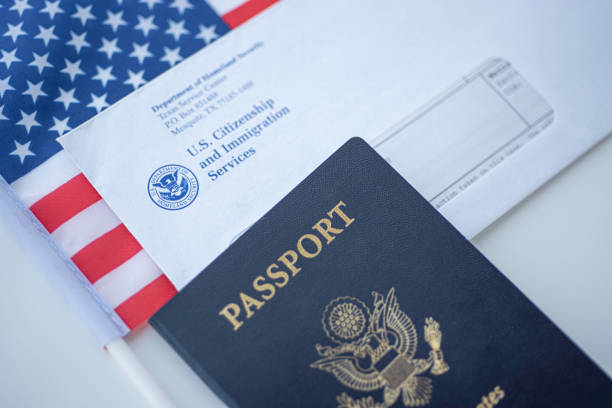
What is a Green Card?
A green card is a legal document that allows immigrants to reside in the United States permanently. After 5 years, or 3 years if you are the spouse of a US citizen, and only if you were a permanent resident at that time, you can petition for US citizenship.
A green card is an official Permanent Resident Card issued by US Citizenship and Immigration Services (USCIS). It is an identity document showing that a person has permanent residency in the United States and is authorized to live and work permanently.
Latest Updates on Green Card 2022-23
The U.S. Citizenship and Immigration Services (USCIS) is encouraging certain employment-based adjustment of status (green card) applicants with approved I-140 petitions to complete their medical examinations before the end of FY 2022. Due to consular closures during the COVID-19 pandemic, many immigrants have left their visas unused and have been unable to take advantage of them as soon as they become available.
A valid Form I-693, Report of Medical Examination and Vaccination Record, is needed to establish that you are not inadmissible to the United States on public health grounds.
USCIS is working to identify and notify applicants whose applications lack this form. In the meantime, to save time and facilitate the green card adjudication process, USCIS recommends the following:
- If an applicant is eligible for employment authorization through an H-1B classification, USCIS recommends including a valid Form I-693 at the time of filing.
- For applicants in the United States with approved I-140 petitions and current priority dates, but who filed their applications without including a valid Form I-693, USCIS recommends visiting a civil surgeon to get a valid Form I-693 before USCIS sends the request. According to USCIS, applicants should not send their medical examinations to the agency until formally requested to do so. Form I-693 is valid for two years from the date that the civil surgeon signs the form.

Green Card Eligibility Categories
There are several ways to become a permanent resident, but to apply for a green card, you must meet the requirements under one of the categories below:
1. Green Card through Family
If you are a relative of a US citizen, you can apply for lawful permanent resident status while you are in the United States. This category includes immediate relatives, fiancé, widowers, and victims of the cruelty of a US citizen.
2. Green Card through Employment
If you are an immigrant worker with extraordinary ability in sciences, arts, education, business, or athletics, or if you are a physician who agrees to work full-time in clinical practice for a set period. The employment can be classified into the following categories:
EB-1: Employment-Based Immigration – Permanent Workers – Extraordinary Ability/Outstanding Professor or Researcher/Multinational Executive or Manager
EB-2: Employment-Based Immigration– Advanced Degree or Exceptional Ability
EB 3: Employment-Based Immigration – Skilled Workers – Professionals and Other Unskilled Workers
EB-4: Immigrant Visa for Religious Workers and Special Immigrants
3. Green Card for Immigrant Investors
If you are an investor who has invested or is actively investing at least $1 million (or $500,000 in a targeted employment area) in a new commercial enterprise in the US that will create full-time positions for at least 10 qualifying employees.
4. Green Card as a Special Immigrant
- Members of a religious denomination coming to the U.S. to work for a nonprofit religious organization.
- A child who has been abused, abandoned, or neglected by their parents and has been given Special Immigrant Juvenile status.
- Afghanistan or Iraq national who served as an Afghan or Iraqi translator for the U.S. government or employed by or for the U.S. government in Iraq on or after March 20, 2003, for at least one year.
- An Afghan employed by the International Security Assistance Force (ISAF)
- An international broadcaster coming to work in the U.S. as a member of the media
5. Green Card for Refugees or Asylee Status
If you were granted asylum status and admitted to the U.S. as a refugee, you may be eligible to apply for a green card. Refugees or asylees are eligible for green cards if they have been in the U.S. for at least one year from their date of admission.
6. Green Card for a Victim of Trafficking (T Non-immigrant)
T nonimmigrant status (also known as the T visa) provides immigration benefits to certain victims who assist law enforcement in investigating or prosecuting human trafficking cases. If you have T nonimmigrant status, you may be eligible to become a lawful permanent resident (obtain a Green Card) if you meet all the requirements.
7. Green Card for Victims of Abuse
- The abused spouse of a U.S. citizen or lawful permanent resident.
- The abused child (unmarried and under 21 years old) of a U.S. citizen or lawful permanent resident.
- The abused parent of a U.S. citizen.
Where do I apply for a Green Card?
The U.S. Citizenship and Immigration Services (USCIS) is in charge of the Green Card application process, but there are many other agencies that can apply for Green Card. Application procedures differ depending on the Green Card holder type and the residency length.
You can choose between the following ways to obtain a Green Card:
- Winning the US government’s Green Card Lottery (also called the Diversity Visa Program or DV Program)
- The Green Card through employment
- The Green Card through investment
- The Green Card for a family reunion
- The Green Card through marriage to a US citizen
The simplest of these options is to enter the annual Green Card Lottery, where the qualifications for winning are few and the odds of winning are enormous.
How to Check your Green Card Application Status?
Applying within the United States
- Find your “Receipt Number.” (See how to find your “Receipt Numbers” below.)
Receipt numbers
Each form an applicant submits to USCIS will be assigned a unique code known as a “Receipt Number,” which consists of three letters and ten numbers, such as ABC1234567891. Look for it in the Form I-797C notification letter (formally known as the “Notice of Action”) that you received when USCIS accepted your Form I-485.
- Visit USCIS’ “Case Status Online” tracker.
- Enter your Receipt Number.
- Click “Check Status.”
Applying outside the United States
- Find your “Immigrant Visa Case Number” (See how to find your “Case Numbers” below).
Case numbers
“Case Numbers” are issued by the NVC and, like USCIS Receipt Numbers, consist of three letters followed by ten numbers (e.g., XYZ1234567891). Your Case Number can be found in the notification letter or email you got from the NVC. After USCIS has accepted your Form I-130 and transferred your information to the NVC, you should receive that notification.
- Visit the NVC’s “Consular Electronic Application Center” (CEAC).
- Click “Check My Visa Application Status.”
- In the first field, select “IMMIGRANT VISA (IV)” as the “Visa Application Type.”
- In the next field, enter your “Immigrant Visa Case Number.”
- In the last field, you should see a computer-generated code. Enter the code you see. (This is used to verify that you’re a human, not a bot).
- Click “Submit.”
